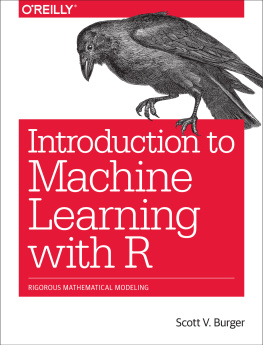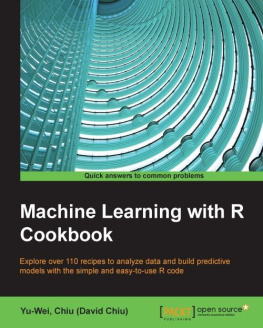Dirk P. Kroese - Data Science and Machine Learning: Mathematical and Statistical Methods
Here you can read online Dirk P. Kroese - Data Science and Machine Learning: Mathematical and Statistical Methods full text of the book (entire story) in english for free. Download pdf and epub, get meaning, cover and reviews about this ebook. year: 2020, publisher: CRC Press, genre: Computer / Science. Description of the work, (preface) as well as reviews are available. Best literature library LitArk.com created for fans of good reading and offers a wide selection of genres:
Romance novel
Science fiction
Adventure
Detective
Science
History
Home and family
Prose
Art
Politics
Computer
Non-fiction
Religion
Business
Children
Humor
Choose a favorite category and find really read worthwhile books. Enjoy immersion in the world of imagination, feel the emotions of the characters or learn something new for yourself, make an fascinating discovery.
- Book:Data Science and Machine Learning: Mathematical and Statistical Methods
- Author:
- Publisher:CRC Press
- Genre:
- Year:2020
- Rating:4 / 5
- Favourites:Add to favourites
- Your mark:
Data Science and Machine Learning: Mathematical and Statistical Methods: summary, description and annotation
We offer to read an annotation, description, summary or preface (depends on what the author of the book "Data Science and Machine Learning: Mathematical and Statistical Methods" wrote himself). If you haven't found the necessary information about the book — write in the comments, we will try to find it.
This is a well-written book that provides a deeper dive into data-scientific methods than many introductory texts. The writing is clear, and the text logically builds up regularization, classification, and decision trees. Compared to its probable competitors, it carves out a unique niche. -Adam Loy, Carleton College
The purpose of Data Science and Machine Learning: Mathematical and Statistical Methods is to provide an accessible, yet comprehensive textbook intended for students interested in gaining a better understanding of the mathematics and statistics that underpin the rich variety of ideas and machine learning algorithms in data science.
Key Features:
Focuses on mathematical understanding.
Presentation is self-contained, accessible, and comprehensive.
Extensive list of exercises and worked-out examples.
Many concrete algorithms with Python code.
Full color throughout.
The Authors:
Dirk P. Kroese, PhD, is a Professor of Mathematics and Statistics at The University of Queensland. He has published over 120 articles and five books in a wide range of areas in mathematics, statistics, data science, machine learning, and Monte Carlo methods. He is a pioneer of the well-known Cross-Entropy method--an adaptive Monte Carlo technique, which is being used around the world to help solve difficult estimation and optimization problems in science, engineering, and finance.
Zdravko Botev, PhD, is an Australian Mathematical Science Institute Lecturer in Data Science and Machine Learning with an appointment at the University of New South Wales in Sydney, Australia. He is the recipient of the 2018 Christopher Heyde Medal of the Australian Academy of Science for distinguished research in the Mathematical Sciences.
Thomas Taimre, PhD, is a Senior Lecturer of Mathematics and Statistics at The University of Queensland. His research interests range from applied probability and Monte Carlo methods to applied physics and the remarkably universal self-mixing effect in lasers. He has published over 100 articles, holds a patent, and is the coauthor of Handbook of Monte Carlo Methods (Wiley).
Radislav Vaisman, PhD, is a Lecturer of Mathematics and Statistics at The University of Queensland. His research interests lie at the intersection of applied probability, machine learning, and computer science. He has published over 20 articles and two books.
Dirk P. Kroese: author's other books
Who wrote Data Science and Machine Learning: Mathematical and Statistical Methods? Find out the surname, the name of the author of the book and a list of all author's works by series.

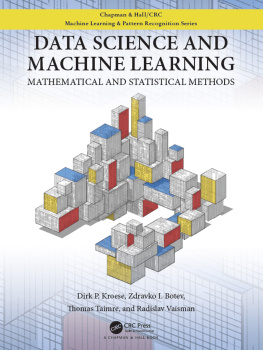
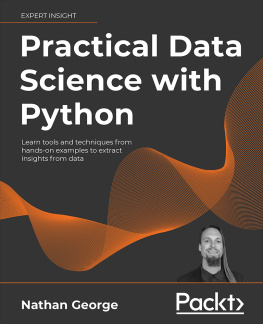
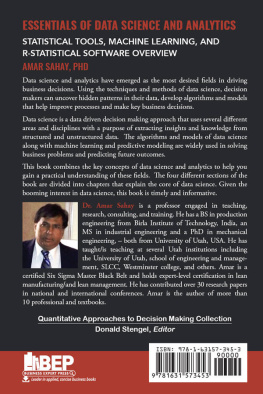

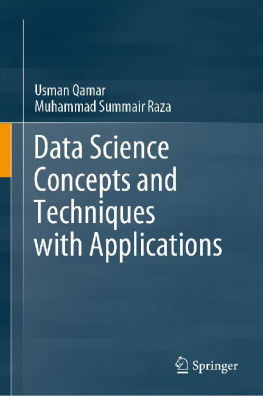
![Frank Kane [Frank Kane] - Hands-On Data Science and Python Machine Learning](/uploads/posts/book/119615/thumbs/frank-kane-frank-kane-hands-on-data-science-and.jpg)
![Daniel D. Gutierrez [Daniel D. Gutierrez] - Machine Learning and Data Science: An Introduction to Statistical Learning Methods with R](/uploads/posts/book/119585/thumbs/daniel-d-gutierrez-daniel-d-gutierrez-machine.jpg)
